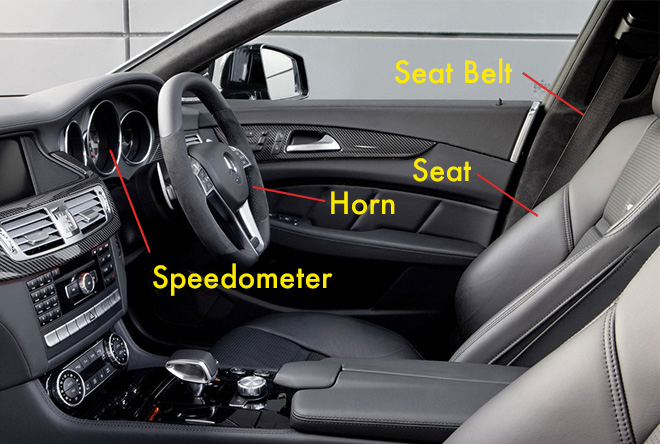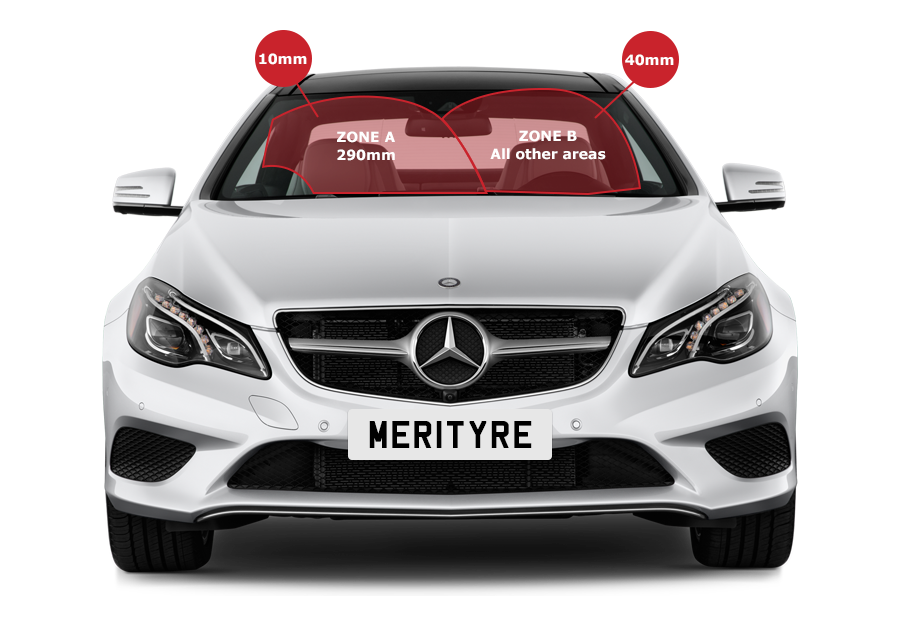What is checked during an MOT test?
Learn more what is checked in an MOT test, as well as common MOT failure reasons you can try and avoid in your next test from this MOT guide:
Car Interior
Seats
The driver’s seat must be fully adjustable, while all seats in the vehicle need to be fully secure and able to remain in an upright position. All seats must have working seatbelts which are in good condition and operate correctly. The full length of the seatbelt will be checked for damage.
Horn
The horn must emit a continuous and uniform sound which is loud enough to be heard clearly by other road users.
Speedometer
It is mandatory that the speedometer is working correctly and gives an accurate reading. Your view of the speedometer must not be impaired, so if the glass has been cracked and distorts your view, your vehicle will fail its MOT test.


Car Exterior
Registration Plates
Registration plates must be securely fitted to the vehicle and they must be in good condition, meaning that they are fully readable and not obscured. The spacing and lettering must meet current legal regulation, so if you have a personalised registration, you should research current government legislation to ensure yours is legal.
Car Body
The body of your vehicle will be checked for any signs of damage and corrosion. All components must be free from jagged and/ or sharp edges that could potentially cause damage or harm to other vehicles or pedestrians.
Doors
The front doors of your vehicle must be easily opened from both inside and outside the vehicle. Your doors will need to latch securely when closed and door hinges will be checked for security and condition. Your bonnet must also open and securely close.
Lights
The condition, operation and security of your vehicle’s lights will be checked, and they will be inspected to ensure that they emit the correct colour. From 20th May 2018, reverse lights, headlight washers and daytime running lights are now tested on vehicles first used from September 2009 if they have them.
Tyres and Wheels
Tyre Size and Structure
Tyres fitted on your vehicle must be of the same size across an axle and of the same structure.
Tyre Condition
Tyres with a tyre tread depth lower than 1.6mm are illegal and will cause your vehicle to fail its MOT test. Check your tyre tread before the MOT test. Damaged tyres can also cause a fail, look out for any cuts, lumps, bulges or exposed cords. From 20th May 2018, all vehicles registered from 1st January 2012 are now subject to a TPMS (Tyre pressure monitoring system) check.
Wheels
Wheels must be in good condition and not contain damage such as cracks, damage or distortion. All nuts/bolts must be present.
View of the Road
Windscreen
The driver’s view of the road must not be obstructed, so extensive damage to the windscreen will cause your vehicle to fail its MOT test. The rule states that cracks or chips larger than 40mm on the windscreen and any damage larger than 10mm in the swept area (labelled ‘Zone A’ in image) will cause a fail.
Washer/Wipers
Windscreen wipers and washers must work effectively to give the driver a clear view of the road. If your wipers do not clear water from your windscreen, leave smears or display visible signs of damage, you should have them replaced prior to the test. You should also ensure that your wiper fluid container is not empty.
Mirrors
All mirrors must be securely fitted to the car and provide adequate views. Any damage in the reflective area of any of the mirrors must not obscure the driver’s view. You must have the following obligatory mirrors fitted to your vehicle: an exterior mirror fitted to the offside (right side of driver), an exterior mirror fitted to the nearside (left side of driver) and an interior mirror.

Engine
Steering
The steering on your vehicle will be checked as part of the MOT Test. Your MOT tester will check that the steering wheel is in good condition, that it is securely attached to the steering shaft and steering pipes/hoses will be checked for any signs of corrosion. In addition, electronic power steering and the operation of your steering lock will be checked.
Suspension
Your suspension system will be tested for distortion, damage, corrosion and wear.
Battery
The car battery will be tested to ensure that it operates correctly and is in good condition. All wires must be securely fitted. Your car battery must be secure and not leaking.
Brakes
The condition, performance and safety of your brakes will be rigorously tested to ensure that your brakes are working effectively. Where relevant, Anti-Lock Braking Systems (ABS) and Electronic Stability Control (ESC) systems will be tested as will the dashboard functions, including the MIL for ABS, ESC, brake fluid warning and electronic park brake. From 20th May 2018, brake pad warning lights are now checked and the condition of your brake pads and discs are also inspected.
Exhaust
Exhaust systems will be checked for signs of damage or corrosion and any serious leaks. Noise levels will also be examined. From 20th May 2018, cars with a diesel particulate filter are now checked to ensure that smoke of any colour is not emitted. If your DPF has been removed or tampered with, your vehicle will be given a major fault unless you can prove that this was for a legitimate reason, such as cleaning.
Emissions
Your vehicle will be checked to ensure it meets the correct requirements for exhaust emissions (dependent on age and fuel type).
For more information on what is checked in an MOT, head over to our MOT section. Alternatively, locate your nearest Merityre centre to book in your MOT today.